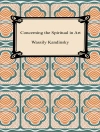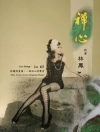The Mind Games of Art and Entertainment goes where no book on art or entertainment has gone before. Beginning in some territory familiar to readers curious about its subject, it goes on to show how entertainment has come to dominate American life-and how the historic events of January 6, 2021 could not have occurred as they did without the Culture of Entertainment as their enfolding context.
Along the way, the book explores such topics as what makes something a work of art or entertainment; how art and entertainment affect us, to both good and bad ends; how entertainment ascended to dominate our culture through democracy, commerce, and technology; and how the Culture of Entertainment breeds a pernicious attitude of unseriousness that infects culture at large and perverts politics. We also see important roles played in this story by a wide array of characters, including Plato and Aristotle, Leo Tolstoy and Luigi Pirandello, Auguste Rodin and Andy Warhol, Mark David Chapman and John Hinckley, P. T. Barnum and Walt Disney, the Muppets of Sesame Street and Donald Trump.
Despite the range of its contents, the book focuses on, as the title says, the mind games of art and entertainment. We play those mind games whenever we experience art or entertainment. In that experience, mind games take us out of the real world to where anything can happen-especially in entertainment-and yet nothing that happens there seems to have serious consequences. But that experience and its mind games can nonetheless have effects on us that we take back into the real world for good or ill-such as the very attitude of unseriousness.
In all, The Mind Games of Art and Entertainment is a short book combining theory and history, psychology and politics, social observation and cultural criticism. And it is itself rather entertaining-in the best way.
Inhoudsopgave
Acknowledgments
Prologue: Why Art Matters
I. The Three Faces of Art
The Creation of Art
The Artwork
The Human Experience of Art
II. The Art Experience: Frames, Fantasy, Mind Games
Frames and Mind Games
The Art Experience vs. Life
Play and the Art Experience
Conclusion
III. The Art Experience: Healer and Killer
Positive Effects of the Art Experience
The Art Experience as Healer
Adverse Effects of the Art Experience
The Art Experience as Killer
Conclusion
IV. The Art Experience: High and Low
The Moral Tradition
Psychological Effects
Separating High Art from Low Art
Secularism and Low Art
Democracy and Low Art
Consumer Capitalism and Low Art
Technology and Low Art
Conclusion
V. The Culture of Entertainment and the Perils of Unseriousness
Entertainment and Its Critics
Mind Games of the Low-Art Experience
Unseriousness and Play
Unseriousness in the Artworld
The Unseriousness of Entertainment and Its Consequences
The Politics of Entertainment and Unseriousness
Conclusion
Epilogue: What Now?
Appendix
Giorgio de Chirico, The Mystery and Melancholy of a Street
A Note on de Chirico, Copies, and Fakes
Endnotes
Index
Over de auteur
James Sloan Allen is a widely published author with a doctorate in European Intellectual History from Columbia. A longtime New Yorker, he now lives in Honolulu.












